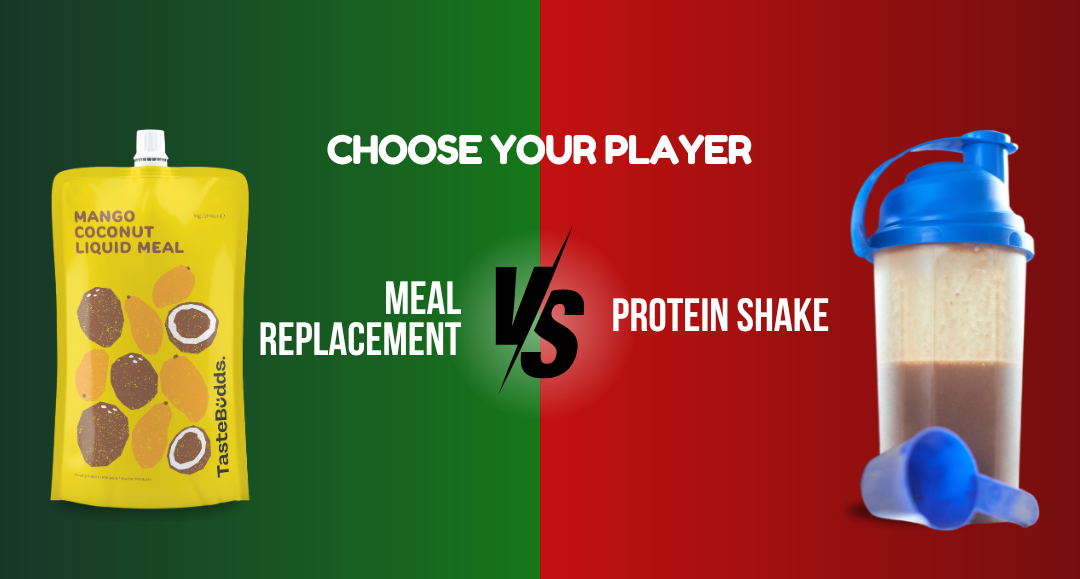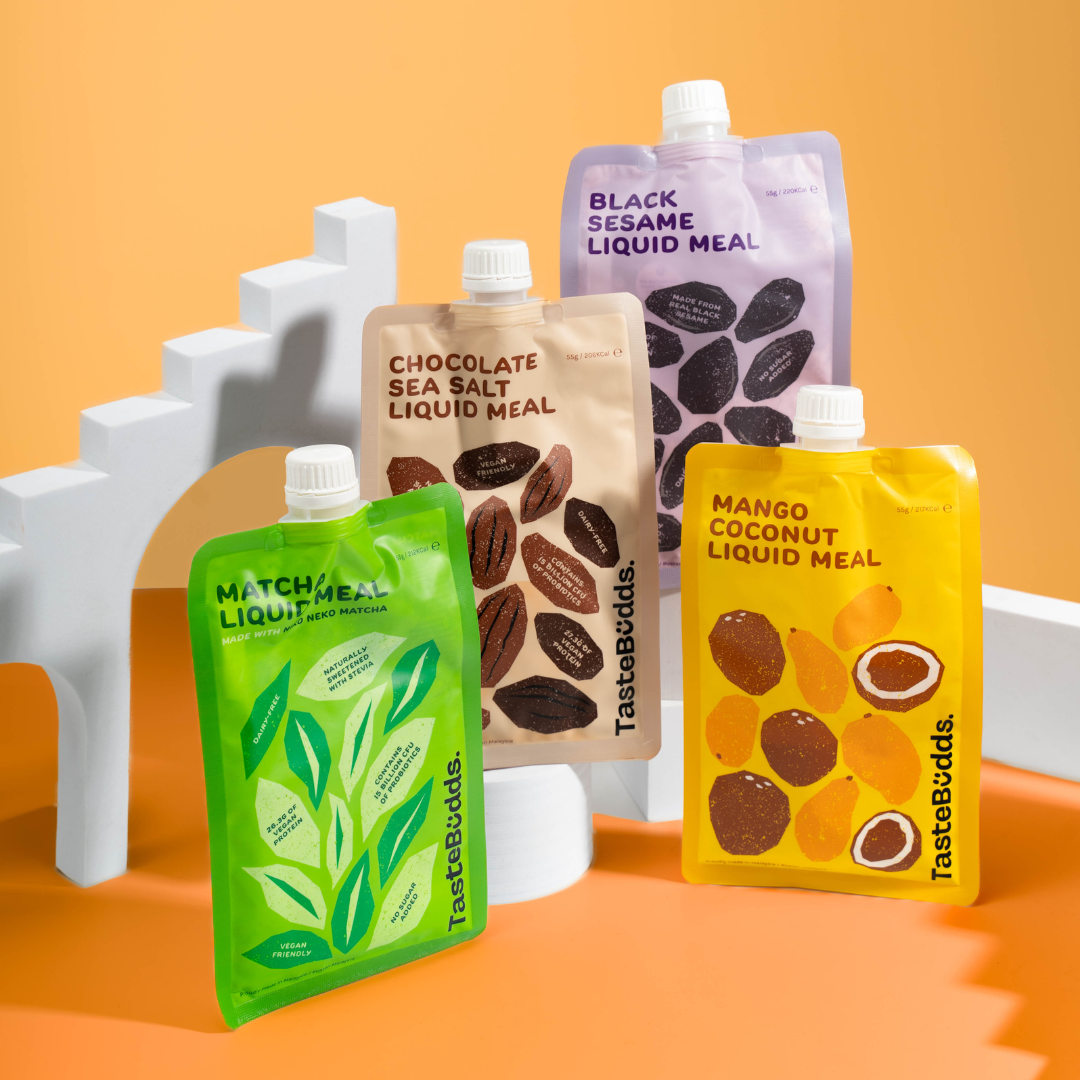
Meal Replacements or Protein Shakes? Choose your player

According to the Global Burden of Disease Study spanning 27 years, no country has successfully decreased its obesity rates, with prevalence nearly tripling over the past four decades. The situation is rightly deemed an epidemic, driven by the imbalance between calorie intake and expenditure, compounded by reduced physical activity typical of urban lifestyles.
Addressing this issue requires a deliberate effort to promote more active living and healthier dietary habits. However, many individuals struggle with making appropriate food choices, influenced by factors such as lack of time, need to eat outside home, increased portion sizes, the availability, convenience, and taste of high-energy but low-nutrient dense food.
Due to the significant role of protein in meal replacements, there's often confusion regarding their similarity to protein shakes. However, they differ, as we'll explore further the differences between meal replacement and protein shake.

What is meal replacement?
Not to be confused with protein shakes, smoothies or juices, meal replacements emerge as a versatile tool for those seeking a balanced and controlled approach to nutrition. By offering a comprehensive blend of proteins, vitamins, and minerals, meal replacements not only aid in weight management but also provide a convenient solution for individuals with busy lifestyles. Depending on the program, they could be used to replace one or two of the usual three daily meals. A protein shake, on the other hand, is primarily intended to deliver protein and is usually designed to add protein consumption to the diet, not to replace a meal.
As ready-to-eat or easy-to-prepare foods, meal replacements are available in various formats, such as meal bars, shakes, and powders that can be blended with milk. Specifically, it offers a way to substitute high-fat and high-calorie meals with a controlled calorie intake.
In contrast to protein shakes or fruit and vegetable juices, a meal replacement shake containing 200 to 300 calories provides a comprehensive array of macronutrients and micronutrients similar to those found in a standard meal of 500 to 800 calories.
The Role of Protein and Fiber in Meal Replacements
Protein is indeed a crucial component of meal replacement products, traditionally sourced from whey. However, with a growing consumer preference for plant-based options, many brands are now incorporating plant-based proteins. These proteins, often accompanied by dietary fiber, serve a dual purpose in managing hunger and appetite effectively.While hunger and appetite are sometimes used interchangeably, they denote distinct concepts. Hunger refers to the physiological need for nourishment, whereas appetite pertains to the desire to eat, which can occur even in the absence of hunger. Besides physiological factors, sensory exposure to food such as sight, smell, taste, has been shown to increase appetite. As an example, if you're a fan of pisang goreng, sometimes even after a full meal, you may consider purchasing it as a post-meal snack! It's okay, we don't judge, we have all been there!
Now, let's delve into how plant-based protein and fiber contribute to satiety:

Protein:
Protein tends to increase feelings of fullness, making you feel more satisfied after a meal. Additionally, it can also help you stay full for a longer duration compared to carbohydrates or fats, which may lead to reduced snacking and overall calorie intake. Its slower digestion rate prolongs its presence in the gastrointestinal tract. Both plant-based and animal-derived proteins have similar effects on appetite regulation. Soy-based products not only offer high-quality proteins but also supply fiber.

Fiber:
Slowing the transit time of food through the stomach and into the small intestine, fiber decelerates glucose absorption into the bloodstream, promoting prolonged satiety. By occupying space in the stomach, fiber triggers receptors that signal the brain to cease eating. Adequate hydration is crucial for facilitating fiber movement through the digestive system, which aids in combating hunger, as thirst can be mistaken for hunger.
Meal Replacements vs Protein Shakes: What’s the Difference?
Protein products and meal replacements serve distinct nutritional purposes tailored to different objectives. To simplify, meal replacements target weight management, whereas protein drinks primarily aim to enhance athletic performance and promote muscle growth.Here's a straightforward breakdown to differentiate between the two:
Meal Replacement:
- Designed to replace one or two daily meals.
- Typically enriched with vitamins and minerals.
- Contain higher levels of fiber and carbohydrates compared to protein shakes.
- While they provide protein, it's usually at lower levels than most protein shakes.
- May have more calories per serving than protein shakes but are lower in calories than full meals.
Protein Shakes:
- Intended to supplement a regular diet rather than replace a meal.
- Consumed before or after workouts to support muscle function and recovery.
- Typically contain up to 25 g of protein per serving.
- Have minimal carbohydrates, usually less than 5 g, as they aren't intended as meal replacements.
- Generally lack added vitamins and minerals beyond those naturally occurring in the protein source.
Both products have distinct benefits, and selecting the appropriate one depends on your specific goals. Protein shakes excel at powering intense workouts and aiding in muscle development and repair, while meal replacement shakes are effective for weight loss or maintenance.
How many meal replacements can you have in one day?
Indeed, there isn't a strict cap on the number of meal replacements you can consume daily, but it's important to consider how many you should have. Some meal replacements suggest a maximum number of servings per day, clearly stated on the packaging. This limit helps prevent consuming too much of certain vitamins and nutrients. It ensures you're getting balanced nutrition without exceeding recommended levels.
Consider your goals and how meal replacements fit into them. If you aim for a calorie deficit, swapping one meal a day with a meal replacement can help control your calorie intake. However, most meal replacements provide around 150-200 calories, so replacing multiple meals might deprive your body of essential energy. It's important to note that meal replacement shakes are distinct from protein powders, designed to mimic a full meal's nutrition. They often contain more carbohydrates, potentially impacting your macronutrient balance depending on your fitness objectives.

While meal replacement shakes offer convenience, relying solely on them can diminish the joy of eating. Food encompasses more than just sustenance; it's an experience of flavors, textures, and creativity. Constantly opting for shakes might lead to taste fatigue and cravings for less nutritious options, ultimately impacting satisfaction with meals.
Whole foods not only provide taste but also essential digestive enzymes vital for gut health and efficient digestion. So, enjoying a vibrant salad offers both nourishment and culinary delight.
Recognizing the need for convenience, replacing one meal a day with a shake can be beneficial, particularly during busy times. However, it's essential to maintain a balance and not overlook the holistic benefits of whole foods for overall well-being.
Did you know TasteBudds also offers meal replacements?
Are you looking for a convenient way to nourish your body on busy days? Look no further than TasteBudds Liquid Meal! Our innovative meal replacement shakes offer a quick and easy solution to meet your nutritional needs, whether you're at home, at work, or on the move.
What sets TasteBudds Liquid Meal apart from other meal replacements? Let's dive into the details:
💊🔬🌱✨Nutrient-Rich Formulation: Our latest formula is packed with essential vitamins, minerals, and probiotics to support your overall well-being. Each serving contains up to 27.3g of plant-based protein, along with a blend of vitamins and minerals to keep you feeling energized and satisfied.
⏱️👌Quick and Easy Preparation: With just 15 seconds and a shake, you can enjoy a complete meal wherever life takes you. Simply add water to the indicated line, shake well, and sip on the go. It's that easy!
🥄👍Real Ingredients You Can Trust: We believe in real nutrition, which is why our Liquid Meal is crafted from high-quality, real ingredients. Say goodbye to artificial sugars – our shakes are naturally sweetened with stevia for guilt-free indulgence.
🥛🚫🌱🌿Dairy-Free and Vegan Friendly: Perfect for those following a vegan lifestyle or with dairy sensitivities, our Liquid Meal is dairy-free and vegan-friendly. You can enjoy the benefits of plant-based nutrition without compromise.
🔽Low Calorie and Low Carb: Keep your health goals on track with our low-calorie and low-carb options. Each serving contains as little as 13.4g of carbs, making it ideal for those watching their carb intake.
✅Halal Certified: Our Liquid Meal is proudly manufactured in a halal-certified factory, ensuring adherence to strict halal standards. You can trust that our products are made with the utmost care and consideration.
🚶♀️👜Portable Pouch Packaging: Our convenient pouch packaging allows you to enjoy Liquid Meal wherever life takes you. Whether you're headed to the gym, the office, or on a weekend getaway, you can easily take your nutrition with you.
Ready to experience the convenience and nutrition of TasteBudds Liquid Meal? Add, shake, and sip your way to balanced nutrition today!
⚫️🍫🥭🌿Variety Pack: Not sure which flavor to try? Our Variety Pack includes four delicious options: Black Sesame, Mango Coconut, Matcha, and Chocolate Sea Salt. With four pouches of each flavor, you can enjoy a taste of variety while discovering your favorite.
Enjoyed this post? Join our community by subscribing to our email and we will notify you for more interesting tips and updates from TasteBudds.


